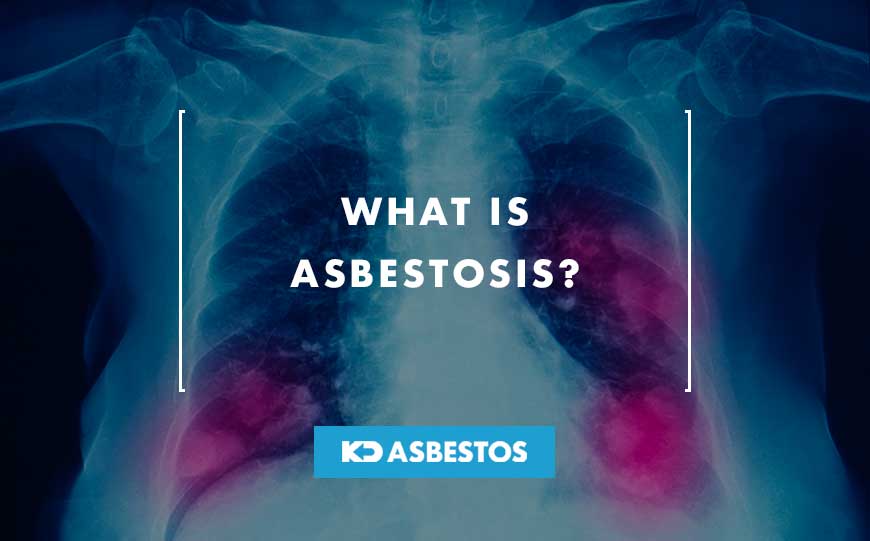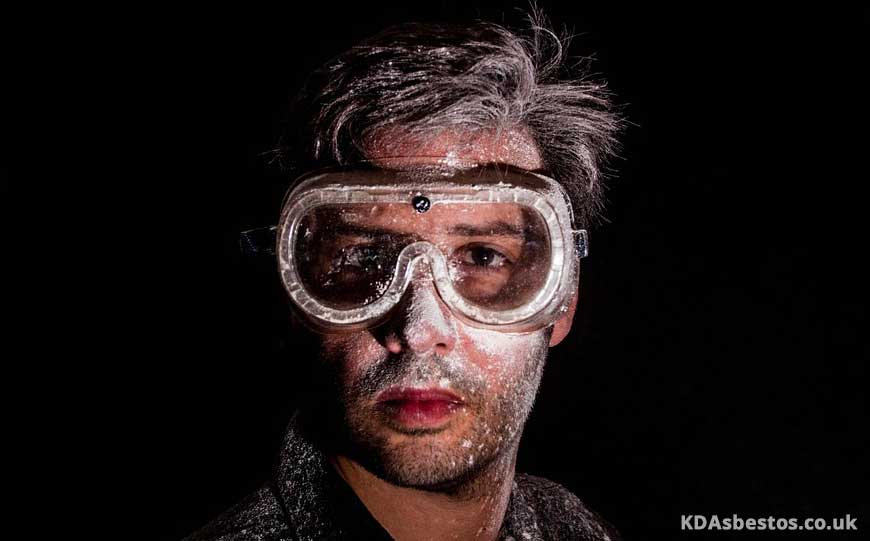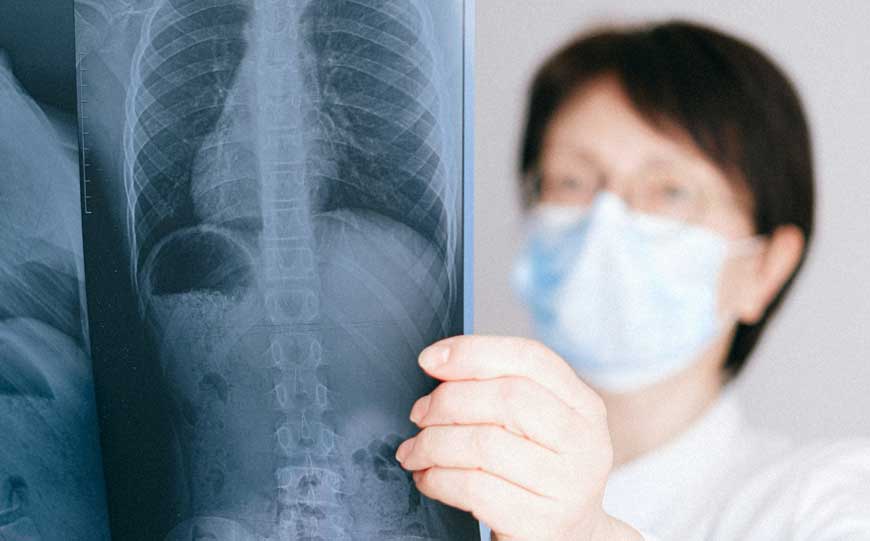
Long-term exposure to asbestos can lead to a severe lung condition called asbestosis.
Asbestos, a fibrous material, was previously used for insulation, flooring, and roofing in buildings.
However, the use of asbestos was banned in the UK in 1999.
Asbestos is usually harmless if left undisturbed.
However, if materials containing asbestos are damaged, they can release fine dust that includes asbestos fibres, which can pose a serious health risk.
When inhaled, these fibres can enter the lungs and cause gradual damage over time, leading to conditions such as asbestosis.
However, usually, a person needs prolonged exposure to asbestos fibres, typically spanning many years, before developing asbestosis.
Table of Contents
Who’s at Risk?

Asbestosis is a comparatively uncommon condition as it necessitates a significant amount of asbestos exposure to develop.
Despite recent protective measures, there were still 178 fatalities in 2011 directly attributed to asbestosis, and 429 cases where it was deemed to have contributed to the cause of death.
In 2012, 980 new cases were evaluated for eligibility for industrial injuries disablement benefit.
Historically, professionals who worked within industries such as building or construction, particularly between the 1970’s and 1990’s, may have been exposed to asbestos.
Presently however, the chances of encountering asbestos are fairly minimal by comparison.
If one’s occupation involves working with materials in older buildings that might still contain asbestos, this does still presently pose a risk.
Individuals who were employed in the mining, milling, manufacturing, installation, or removal of asbestos products before the late 1970s are at the greatest risk of developing asbestosis.
Examples include:
- asbestos miners
- aircraft and car mechanics
- boiler operators
- construction workers
- electricians
- rail workers
- refinery and mill workers
- shipyard workers
- contractors removing asbestos from older buildings
The risk of developing asbestosis is typically linked to the quantity and duration of exposure to asbestos.
Greater exposure to asbestos corresponds with a higher risk of lung damage.
In some instances, household members of individuals who have been exposed to asbestos are susceptible to secondhand exposure, as the fibres can adhere to clothing and be carried home.
Additionally, individuals residing near mines may be exposed to asbestos fibers released into the air.
Causes of Asbestosis

Image credit: Pexels
Extended exposure to high levels of asbestos dust can lead to the retention of some of the airborne fibres in the alveoli, which are small sacs inside the lungs that exchange oxygen and carbon dioxide in the blood.
The fibers can irritate and scar the lung tissue, causing the lungs to become less flexible, which can make breathing difficult.
As asbestosis advances, more lung tissue becomes scarred, eventually resulting in such stiff lungs that they are unable to expand and contract as they should.
Smoking is believed to increase the retention of asbestos fibers in the lungs and usually leads to a faster progression of the disease.
Asbestosis Symptoms

Image credit: Pexels
Inhaling asbestos fibres can result in lung scarring, which can cause various symptoms, including:
- shortness of breath
- persistent cough
- wheezing
- fatigue
- chest or shoulder pain
- clubbed (swollen) fingertips in advanced cases.
Symptoms may not become apparent until 20 to 30 years after initial exposure.
When to Seek Medical Assistance
If you’re experiencing symptoms of asbestosis and believe that you’ve been exposed to asbestos, it’s recommended that you urgently seek the help of a general practitioner (GP).
The GP will listen to your lungs and inquire about your employment history.
If asbestosis is suspected, they may refer you to a lung disease specialist for additional testing.
Diagnostic tests for asbestosis can include:
- chest X-ray.
- CT scan of the lungs.
- tests to evaluate lung functionality.
Asbestosis Treatment

Man Receiving Oxygen Therapy. Image credit: Shutterstock
There is no known cure for asbestosis.
The damage to the lungs cannot be reversed, and thus management of the condition is primarily focused on improving the patient’s quality of life.
While asbestosis cannot be cured once developed, there are some treatments that can help manage its symptoms, including:
Pulmonary Rehabilitation
A program of exercises and education that can help you manage your breathing difficulties.
Oxygen Therapy
Breathing in oxygen-rich air from a machine or tank to improve breathlessness if your blood oxygen levels are low.
Inhalers
These can help ease breathing if your symptoms are mild.
It’s also important to take the following steps:
Stop Smoking
Symptoms can worsen in those who smoke, and smoking also increases the risk of lung cancer.
Flu & Pneumococcal Vaccinations
Your lungs will be more vulnerable to infections like flu and pneumonia, so it’s important to take steps to prevent them.
You should see a GP to receive these vaccinations.
Prognosis
The prognosis of asbestosis can differ considerably, based on the level of lung damage and the presence of any accompanying medical conditions.
Asbestosis can deteriorate gradually over time, and severe cases can exert a considerable burden on an individual’s health, leading to a reduced life expectancy.
Nevertheless, in numerous instances, the disease advances slowly or remains stable.
Individuals with asbestosis are at a greater risk of developing other severe and potentially life-threatening conditions, including thickening of the membrane that covers the lungs (pleural disease), which can aggravate breathing difficulties and chest discomfort.
They may also be at a higher risk of developing mesothelioma, a type of cancer that affects the membrane covering the lungs, heart, and gut, as well as lung cancer.
In general, the number of people with asbestosis who die due to one of the cancers mentioned previously or from natural causes is higher than those who die from asbestosis itself.
Compensation

Lawyer Completing Compensation Claim. Image credit: PIxabay
Compensation may be available for individuals who have been diagnosed with asbestosis.
Industrial Injuries Disablement Benefit
This is a weekly benefit that may be paid to people with asbestosis who were exposed to asbestos while in employment (but not self-employed).
Civil Claim Through Courts
You will need to obtain legal advice about how to do this.
Lump Sum Compensation
If you have asbestosis, or are the dependant of someone who’s died from the condition, and haven’t been able to get compensation through the courts because the employer who exposed you (or the person on whose behalf you are claiming) has ceased trading, you can get a lump sum under the Workers’ Compensation Act 1979.
Ways to Prevent Asbestosis
Three types of asbestos were used in construction:
Crocidolite and amosite were banned in 1985, while chrysotile was widely banned in the UK in 1999.
Despite the regulations, many older buildings still contain large amounts of asbestos.
To minimise the risk of inhaling asbestos fibres, it’s crucial to take precautions, particularly if you live or work in a building that may contain asbestos.
To determine whether your house has asbestos, you can ask an environmental health officer at your local council for guidance or speak to an asbestos surveyor to take a look.
Under no circumstances should you attempt to extract any materials that you believe might contain asbestos.
You should always speak to a fully qualified and licensed asbestos removal company.
If your occupation exposes you to asbestos fibres, it is essential to understand what you can do to decrease your risk.
Unless you’ve received HSE asbestos training on how to remove the material safely, do not attempt to remove any asbestos that you discover.